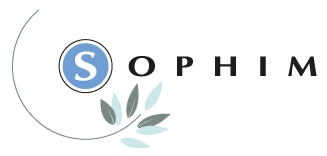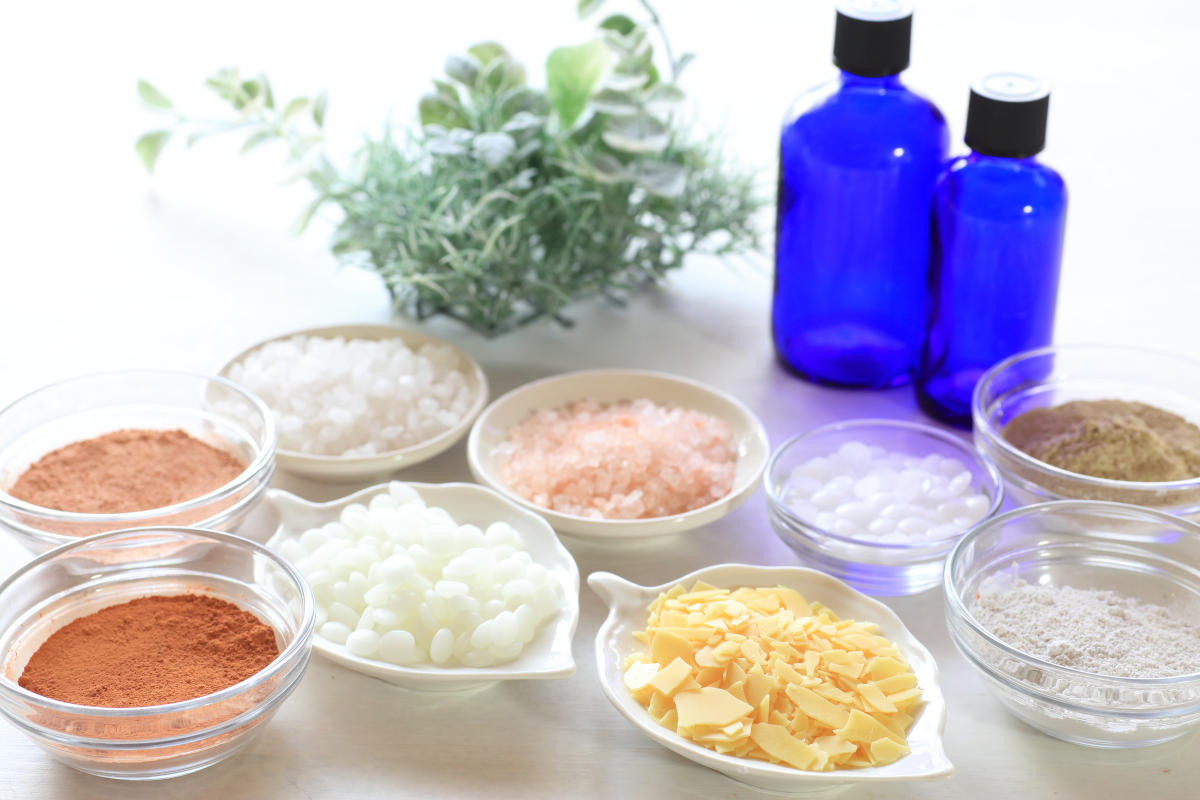Cosmetic formulations incorporate different ingredients, all of which have a specific function. But are all ingredients the same? Are some dangerous to your health? Sophim, producer of natural cosmetic ingredients, helps you to decipher the ingredients present in the chemistry of a cosmetic product!
The main families of cosmetic ingredients
Cosmetic formulation requires a high level of expertise. Specialised engineers and technicians must identify the various ingredients required and define the best proportions to meet the specifications in terms of benefits, sensoriality and safety for health.
We can identify several major families of ingredients:
- Actives
- Texturing agents
- Opacifiers
- Pigments and Colourants
- Surfactants
- Preservatives
- UV-filters
Actives
Present mainly in cosmetic and hair care products, but also sometimes in make-up products, active ingredients have a biological activity and give a cosmetic formulation its claimed effectiveness.
Squalane, and especially Phytosqualan by SOPHIM, is an active.
Active ingredients can have, among other things, slimming, antioxidant, anti-ageing or anti-wrinkle, firming, moisturising and repairing, tensor or anti-comedogenic effects.
Texturing agents
These ingredients give a cosmetic product its structure, rheological properties, and application performance on the skin. They contribute, for example, to viscosity, smoothness, spreadability, flowability, softness and penetration. They may also play a nutritive or moisturising role.
Texturing agents play an essential role in the chemistry of a cosmetic product, as they contribute directly to its sensoriality and effectiveness.
The properties of texturing agents are varied, with emollient, emulsifying, foaming, thickening or dispersing functions.
Vegetable waxes or butters are an example, making it possible to add thickness to a formula, or to obtain a solid galenic.
Opacifiers
Opacifiers modify the final appearance of a cosmetic product by reducing its transparent or translucent appearance. They favour a “richer” and smoother finish, for greater sensoriality and pleasure of application.
Pigments and Colourants
Pigments and colourants are mainly found in make-up products such as foundation, lipstick or colouring creams. They can be found, for example, in the form of coloured powders.
They can be at the heart of the expected benefit (foundation), or contribute to the consumer experience and desirability of a cosmetic product, by giving it a particular colour.
Surfactants
Texturing agents with surfactant properties are used in many cosmetic products to promote the stability of an emulsion.
Surfactants are also promoted for their cleaning and degreasing properties, and are used in many shampoos, shower gels or liquid soaps.
In cosmetics, the preferred surfactants have moderate detergent properties, so as not to attack the skin.
Preservatives
These ingredients are important to ensure that a cosmetic formulation lasts over time, by preventing alteration or oxidation phenomena.
Preservatives are intended to prevent the proliferation of germs, bacteria, yeast and moulds (fungi), and to reduce the phenomenon of “corrosion” of a body during its exposure to oxygen molecules.
However, the advent of solid cosmetics, without water to encourage the growth of germs, has limited their use.
UV-filters
These ingredients help to protect the skin against ultraviolet rays. These rays are generated by the sun and are divided into two types according to their wavelength: UVA and UVB. UVA rays cause accelerated ageing of the skin, while UVB rays cause burns, the so-called “sunburns”.
UV-filters are obviously a must in all sun protection products, but they are also found in other products, in smaller quantities.
A useful deciphering of labels and certifications
The actors in the cosmetics industry must establish a relationship of trust with consumers and reassure them of the quality and absence of risk of the ingredients used. Numerous labels make it possible to decipher the quality of the ingredients in a cosmetic formulation.
A protective European regulation
The cosmetics industry is strictly regulated in France and Europe. The cosmetic ingredients used in the composition of marketed products must have demonstrated their harmlessness to health, and are validated after a complete toxicological file has been compiled without the use of animal testing.
Directive 76/768/EEC regulates the formulation, production, labelling and packaging of cosmetic products. It is complemented by Regulation (EC) N° 1223/2009, which is dedicated to the criteria for cosmetic product claims and is intended to provide quality information. Each Member State is responsible for the compliance of products produced or imported into Europe. We invite you to consult our dossier on the European regulation of cosmetic products.
But other criteria and labels can reassure you about the quality of the ingredients used.
The COSMOS certification
Issued by an independent organisation, the COSMOS certification guarantees the natural or organic character of a cosmetic product. It guarantees in particular:
- The use of production and transformation processes that respect the environment and health
- The responsible use of natural resources
- The respect for biodiversity
- The absence of petrochemical ingredients in the formulation, apart from authorised preservatives;
- The absence of ingredients from genetically modified organisms (GMOs);
- The recyclable packaging;
- The contribution to the development and promotion of the concept of green chemistry.
In France, Bureau Veritas Certification, Ecocert and Cosmécert are authorised to deliver COSMOS certification.
The COSMOS NATURAL signature guarantees a cosmetic product that is free of parabens, phenoxyethanol, perfumes and synthetic colourings.
The COSMOS ORGANIC signature is based on the COSMOS specifications, with a defined minimum proportion of organically produced ingredients.
The logo on the packaging includes the logo of the certification body and the terms COSMOS NATURAL and COSMOS ORGANIC. For example, for a product certified by ECOCERT :
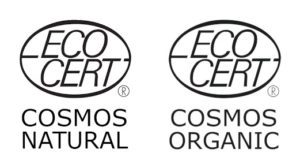
Organic certification labels
Organic products that contain natural ingredients from organic farming can be identified by the labels available on the market.
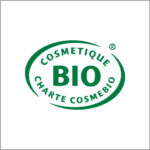
The BIO Charge Cosmebio label guarantees a product with a minimum of 95% ingredients of natural origin, 95% ingredients of plant origin from organic farming, and 10% organic ingredients for the entire product.
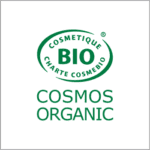
The COSMOS ORGANIC signature is even more protective, and guarantees a product with at least 95% of ingredients of natural origin, 95% of plant ingredients labelled as organic, and 20% of organic ingredients in the total product.
Note: waters and minerals, which are ingredients of natural origin, cannot be considered organic as they are not based on an agricultural production process.
Other association initiatives aim to promote organic cosmetic products. The non-profit association Nature & Progrès, for example, offers a label intended to highlight cosmetic products whose composition features 100% natural and organic ingredients in a minimum proportion of 20%.
The Vegan certification labels
Several labels have been created to guarantee consumers vegan products, which do not contain any ingredients of animal origin in their composition or in the manufacture of their packaging. The best-known labels are Vegan Society, Vegan Approved, Vegan Awareness Foundation, VeganOK and Vegecert Vegan, Expertise Végane Europe (EVE) and Vegancert (Bioagricert).

The specifications of the Expertise Végane Europe (EVE) label are now one of the most rigorous and complete. The EVE VEGAN® certification mark, which originated in France, is now recognised throughout the world.
Applications to decipher the chemistry of a cosmetic product
Since 1999, the INCI list (International Nomenclature of Cosmetic Ingredients) has laid down a compulsory nomenclature to be displayed on cosmetic products. The ingredients used are thus named in a formal and legible manner. Several applications rely on this nomenclature to scan a cosmetic product in order to know its composition and to identify potentially risky ingredients:
- INCI Beauty: this independent French application relies in particular on a partnership with the Clermont-Ferrand School of Chemistry to guarantee quality information.
- QuelProduit: this application is published by UFC Que-Choisir, a consumer protection association, and offers accessible, clear and independent information on cosmetic, food and household products.
- Yuka: this application, developed by Yuca SAS, is independent. Originally designed to scan food products, it has gradually expanded its database to include cosmetic products.
These applications may highlight ingredients that are subject to safety concerns, or that are potentially allergenic or endocrine disrupting.
Natural cosmetic ingredients with Sophim
As a manufacturer of French cosmetic ingredients, Sophim offers the sector players ingredients of natural origin. Respectful of nature and meeting the COSMOS NATURAL and COSMOS ORGANIC specifications, they are used in many formulations. You can talk to your usual contact at Sophim, contact us at (+33)4 92 33 17 17 or send us a message online.
Category: Chemical expertise





